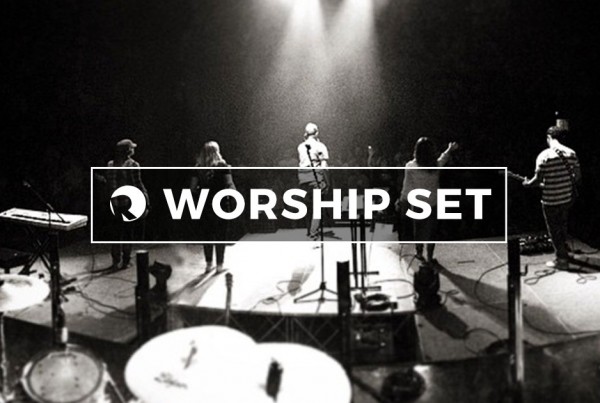If you’ll take that first step, you can go anywhere you want to go. The “7 Baby Steps” won’t be easy, but they’re guaranteed to work if you follow them. They go beyond simply treating the symptoms of money problems like debt and lack of savings, and focus on changing your behavior—the real cause of those issues—through a proven, step-by-step plan. But it’s up to you to get started. Are you ready?
Baby Step 1: Save $1,000 to Start an Emergency Fund
In this first step, the goal is to save $1,000 as fast as you can. An emergency fund is for those unexpected events in life you can’t plan for. Without an emergency fund, people tend to go into debt to cover those surprise expenses like plumbing issues or car troubles—but you’re not doing debt anymore!
Keep your emergency fund in a checking account separate from your regular account—that way you won’t dig a deeper hole while you’re trying to work your way out of debt. But saving $1,000 fast won’t be easy unless you’ve created a budget.
Baby Step 2: Pay off Debt Using the Debt Snowball Method
Now that you’re prepared to avoid future debt, it’s finally time to get rid of your current debt. Start by listing everything you owe except your mortgage. This is called the debt snowball method, and you’ll use it to knock out your debts one by one. You’ll order your debts by balance, smallest to largest. Don’t worry about interest rates unless two debts have similar payoffs—then you’ll list the higher interest rate debt first.
Attack the first balance on your list by paying as much as you can each month while making minimum payments on your other debts. When you’ve paid it off, add what you were paying on it to the payment on your next debt and start attacking it. Your results will keep you motivated to dump all your debt.
Before you know it, you’re debt-free!
Baby Step 3: Save 3–6 Months of Expenses for Emergencies
This step is all about building your full emergency fund with 3–6 months of expenses. After the momentum and intensity of Baby Step 2, it’s easy for your energy to fizzle out before you complete your emergency fund. Don’t let that happen!
In the same way your $1,000 starter emergency fund kept you from going into debt over emergency expenses, your fully funded emergency savings will protect you against life’s bigger surprises. Keep it in a separate checking account or money market account so you won’t be tempted to touch it. And remember, the easiest way to build up your emergency fund is by having a solid budget.
Baby Step 4: Invest 15% of Your Household Income Into Roth IRAs and Pre-Tax Retirement Funds
The money you were using to attack debt can now help build your future. In Baby Step 4, it’s time to get serious about retirement—no matter your age.
Your goal is to invest 15% of your household income into pre-tax retirement. Start by investing enough in your company 401(k) plan to receive the full employer match. Then invest the rest into Roth IRAs—one for you and one for your spouse if you’re married. If your company doesn’t offer a retirement plan or match your contributions, then go straight to the Roth IRA.
Spread the money across four types of mutual funds: growth, aggressive growth, growth and income, and international. Even a couple hundred dollars a month invested now can make you a multi-millionaire over time.
Baby Step 5: Save for Your Children’s College Fund
By this step, you’ve paid off all debts but the house and started your retirement savings. Now it’s time to save for your children’s college expenses. Saving now will put you ahead of the game when your teens graduate from high school.
Two smart ways to save for your children’s college are 529 college savings plans or ESAs (Education Savings Accounts). These are both tax-advantaged savings options specifically for saving and paying for college expenses. Similar to Roth IRAs for retirement, you can invest in mutual funds through these accounts.
Before you choose either option, do your homework! Depending on your income and what state you live in, a 529 might be better than an ESA. All that’s left then is to get started!
Baby Step 6: Pay off Your Home Early
Baby Step 6 is the big one! There’s only one more debt standing in the way of your debt freedom—your mortgage. Can you imagine your life with no house payment? Think of this part of your journey to debt freedom as a marathon.
Any extra money you can put toward your mortgage will help save you tens of thousands of dollars in monthly (or even yearly) interest. If you currently have an ARM, interest-only, or even 30-year mortgage, consider refinancing to a 15-year, fixed-rate mortgage. Or talk to a real estate professional recommended by Dave to help you reach your goal.
Baby Step 7: Build Wealth and Give
You know what people with no debt and no payments can do? Anything they want! Baby Step 7 is the last step and, by far, the most fun.
Now you can truly live and give like no one else by building wealth, becoming insanely generous, and leaving an inheritance for future generations. And it’s all because you had discipline for a few years. Now that’s leaving a legacy!
Your perseverance and good habits got you here, so keep setting goals and budgeting every month. Max out your 401(k) and Roth IRAs so you can continue to live and give like no one else—even in retirement.
Want help personally with the steps above? Click to register for Relevant’s upcoming “Experiencing Financial Freedom Workshop” on Saturday, February 9, 2019. Registration for this event is now closed.



